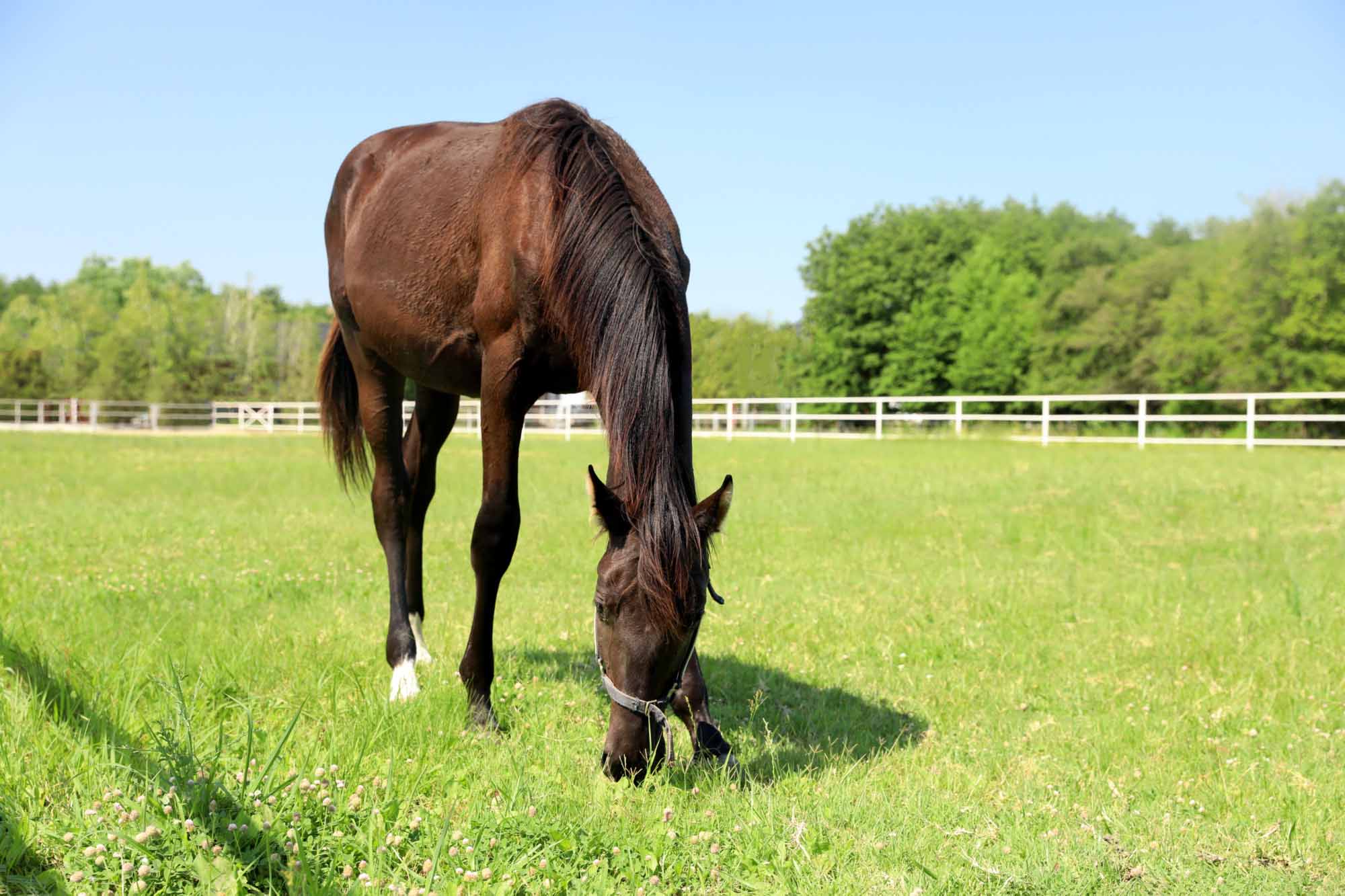As the leaves begin to change and cooler breezes sweep through your garden, the perfect opportunity for lawn rejuvenation is right at your doorstep. Many homeowners overlook the benefits of autumn grass seed sowing, yet its advantages are undeniable. Timing your grass seed sowing strategically can set the stage for a lush, vibrant lawn.
Autumn presents a unique climate that is conducive to germination, with cooler air temperatures paired with warm soil. This ideal environment not only promotes seed growth but also offers reduced competition from weeds, allowing your grass to thrive. Understanding the seasonal dynamics will ensure you make informed choices for preparing your lawn effectively.
In this article, we will explore the compelling reasons why sowing grass seed in autumn is a smart decision. We will also guide you through preparation, watering strategies, and aftercare to secure a thriving lawn come spring. Prepare to unlock the potential of your outdoor space this fall.
Benefits of Autumn Grass Seed Sowing
Successfully establishing a lush, vibrant lawn from seed demands strategic timing, and autumn stands out as the premier season for sowing grass seeds. The period between September and November presents a window where soil conditions and weather patterns converge to form the perfect bedrock for seed germination and root development. Unlike the scorching heat and dryness of summer or the unpredictable conditions of spring, autumn delivers a consistent climatic equilibrium that nurtures the seeds planted.
The soil retains a residual warmth from the summer months, which is pivotal in supporting the germination process of grass seeds. This soil temperature balance means that your lawn from seed will not only germinate effectively but will also start to establish a root system robust enough to withstand the winter months ahead. This sets the stage for the grand reveal of a full, green lawn as spring unveils.
Moreover, autumn sowing minimises the fierce competition from weeds that is typical of warmer seasons. By sowing your choice of lawn seed during this time, you preempt the onslaught of weeds that would otherwise divert the essential nutrients and space your grass seedlings require to flourish. This advantage ensures that the effort you put into your lawn results in a dominant display of the grass variety you desire, rather than a field of unwelcome plants.
When you opt to sow seed in autumn, you have the flexibility to select from a wide range of lawn seed mixes tailored to cater to your specific conditions, whether you're going for an ornamental lawn or a hard-wearing family one. Such bespoke choices are less achievable with ready-to-lay turf, making your decision to grow a lawn from scratch in autumn a pivotal step toward achieving that beautiful, bespoke lawn that stands as a testament to your gardening prowess.
Cooler Temperatures for Germination
Grass seeds are not impervious to the whims of the weather; they require a precise zone of soil temperature for optimal germination—neither too hot nor too cold. Autumn strikes the perfect balance with soil temperatures lingering between 9-12°C, an ideal range that facilitates regular grass seed growth. It is this subtle dance with nature that gives life to grass seedlings.
The comforting embrace of at least 10°C in the ground is the sweet spot for rapid germination, a condition readily present in the early autumn days. This natural incubation period has an added benefit in the form of minimal heavy rain forecast, which further encourages uninterrupted growth.
Warm Soil Retains Moisture
The warm soil of early autumn is a treasure trove for moisture retention, an element crucial for the survival and growth of new grass seeds. Preemptive soil preparation, such as incorporating compost into sandy or otherwise fast-draining soil, can bolster this natural moisture retention capability. This enables the ground to sustain the germinating seeds with an adequate water supply essential for their growth.
This is the time to ensure that the soil is thoroughly moistened before the onset of winter, encouraging continued germination when spring ushers in new growth. Thankfully, the frequent rainfalls typical of autumn alleviate the need for the gardener to water extensively, as nature conveniently provides the necessary hydration to keep the soil moist.
Reduced Weed Competition
The strategic choice to sow grass seed during the lush period of autumn pays off in the long game against weeds. With significantly fewer weed seedlings taking root, the fledgling grass enjoys a relatively undisturbed beginning. The delayed germination works in favor of our verdant grass—the cooler temperatures of autumn create an unfavorable climate for weeds, giving your lawn a fighting chance to establish itself before it must face its rivals in spring and summer.
When the gardening season reaches its crescendo, your wisely chosen autumn-implemented lawn is thoroughly prepared to fend off the invasive weeds. This foresight spares you the labor and time that would otherwise be spent on combating these pesky intruders, leaving you more time to relish the splendor of a fantastic lawn that's yours to enjoy.
Reduced Weed Competition
Reduced Weed Competition When Sowing Grass Seed in Autumn
Embarking on lawn renovations by sowing grass seeds in autumn can pay off immensely in terms of reduced weed competition. Here's why planting your grass seed in autumn is the tactical choice for a beautiful lawn:
- Fewer Weeds: Grass seeds planted in the fall experience notably less competition from emerging weeds compared to the spring season. This results in a lush, green lawn with virtually no unwanted plants.
- Delay in Germination: Autumn-sown grass seeds benefit from a delay in germination, outpacing spring weeds that typically try to establish themselves aggressively. Your grass has the advantage and the strength to stand its ground when weed growth is at its peak.
- Optimal Temperatures: The cooler weather conditions of autumn are tailored for grass growth, impeding weed proliferation. This fosters an environment where grass seedlings can flourish with minimal interference.
- Strong Foundations: Planting lawn seed when the soil temperature is just right allows your grass to build a strong root system so that when spring rolls around, it's already established and ready to outcompete any new weeds.
- Spring Readiness: A lawn from scratch sown in autumn means potentially bypassing the need for spring reseeding. The lawn has already had the head start it needs, allowing you to enjoy a fantastic, ornamental lawn as the warmer months emerge.
In short, if you're aiming for a lawn with less weed disturbance and more success, sowing grass seed in autumn is your strategic move.
|
Season |
Weed Competition |
Grass Success |
|---|---|---|
|
Autumn |
Reduced |
High |
|
Spring |
Increased |
Variable |
Remember, the key to a vibrant lawn is not just choosing a wide range of lawn seed but also considering the perfect timing. Autumn provides that window of opportunity for your lawn to truly thrive.
How to Prepare Your Lawn for Autumn Grass Seed Sowing
When embarking on the mission to create an entire lawn from scratch or to undertake substantial lawn renovations, the preparation stage cannot be overstated. Initiating the process of sowing grass seed in autumn requires meticulous attention, starting with removing stubborn perennial before sowing begins. For lawns to reach their full potential, compacted soil should be diligently dug or rotovated to a depth of 20 cm (8 inches) to improve aeration and root development.
For those dealing with sandy soil, augmenting it with compost can help. This amendment will help retain soil moisture, providing a welcoming bed for the grass seed mix.
Finalising the prep stage involves firming the soil by treading carefully on it multiple times and raking the surface in different directions. This critical action is responsible for establishing a level seedbed – an absolute necessity for an even distribution and successful germination of lawn seeds. Foregoing this step could result in an uneven green lawn, which is far from the dream of most garden enthusiasts.
Choosing the Right Grass Seed Mix
Selecting the correct grass seed mix is as crucial as the preparation of the soil. A blend of red fescue and Lolium perennial ryegrass is an ideal starting point for a mix that will perform well in both sun-drenched and partially shaded areas. If your lawn experiences more shade than sunlight, then a shady lawn grass seed mix will be your ticket to lush not lacklustre greenery.
Be on the lookout for labels that specify the type of seed mixes that are specially tailored for particular conditions such as shade tolerance or resilience to heavy foot traffic. These considerations can help guide the decision to a perfect choice. Popular mixes that strike a balance between beauty and durability often include Kentucky bluegrass, fine fescue, and perennial ryegrass, creating a composite that can withstand a myriad of weather conditions and usage demands.
Preparing Seedbed and Soil Contact
Before unleashing the power of grass seeds onto your prospective lawn, preparing the seedbed is undebatable. This involves removing any remnants of old grass or weeds and leveling the area to an even gradient. The soil should be moist but not over-saturated, facilitating optimum drainage while maintaining necessary water retention.
A pro-tip for supporting grass seed germination is by enhancing the seedbed with a layer of nutrient-rich soil mix. Subsequently, after spreading the grass seed, lightly rake over the area to ensure ample contact between the seeds and fertile soil, as it is imperative for germination. To solidify this bond, either treading the soil or employing a lawn roller post-sowing compresses the seed into the earth without impeding drainage.
For those setting out to sow their lawn, maintaining accuracy in seed distribution is critical, especially for large areas which might benefit from being dissected into smaller, more manageable segments. This method of sowing not only assures an even spread but also leads to a uniform and beautiful lawn.
These preparatory steps will guide you towards achieving a fantastic lawn that will withstand the winter months and bloom into full splendor come spring. With your dedication to proper soil preparation and choice of grass seed mix, your efforts will be rewarded with a lush, green lawn ready to impress.
Effective Watering Strategies
To ensure a fantastic lawn from seed, your watering strategies must be as finely tuned as the rest of the lawn care process. Grass seeds require a precise amount of water to germinate properly, and striving for this perfect balance is key. At the outset, use a light spray when watering to prevent the newly sewn seeds from being dispersed or washed away. During the critical germination period, frequent, light-watering bursts are preferable, promoting consistent soil moisture without leading to puddles that can damage the seeds. An added topdressing layer can enhance moisture retention, ensuring the seeds remain in close contact with the hydrating soil, a pivotal factor for successful sprouting.
When managing the soil's moisture levels, preventing the emergence of waterlogging is necessary. This common issue not only hinders germination but can also promote rot and disease in emerging grass seedlings. Forewarned with a knowledge of weather conditions and the moisture-holding properties of your soil type—be it clay's tenacity or sandy soil's rapid drainage—you'll be able to manage your watering regime with precision, adjusting for natural rainfall and local climate patterns.
Embrace these strategies for watering your range of lawn seed, and watch as your efforts yield a healthy, green lawn that stands as a testament to your attention to detail.
Initial Watering Techniques
After sowing seeds, commence with adequate watering to kickstart the germination process. Utilise a fine-spray watering can or a sprinkler system to saturate the area thoroughly without disturbing the seeds. Daily watering will become part of your routine until the grass seedlings are established—generally taking 1 to 2 weeks. Use a sprinkler for extensive areas to ensure an even distribution of water across the entire lawn.
In sweltering conditions, late-day watering after the sun has set is advised to curtail evaporation and augment soil absorption. If the weather forecast predicts a dry stretch post-sowing, maintaining soil moist with a gentle misting is crucial for the seeds to stay moist and for germination to proceed.
Maintaining Adequate Moisture Levels
To cultivate a beautiful lawn from scratch, it is vital to keep the soil's moisture levels balanced during the germination period, ensuring the soil remains damp but not waterlogged. Especially during the initial two weeks post-sowing, water in short, frequent spurts to maintain this environmental constancy.
Applying a layer of topsoil or topdressing over the seeds can enhance moisture retention. Be mindful that different soil types will necessitate varied watering approaches—clay holds moisture longer compared to the rapid drainage of sandy soil. It's paramount to water more frequently if the sowing season presents you with drier than usual ground conditions.
Avoiding Waterlogging Issues
Ensuring your freshly sown grass seeds are not thwarted by waterlogging begins before sowing; confirm your soil possesses excellent drainage capabilities. Adding topsoil can improve problematic areas with excess moisture retention. To prevent water stagnation, aerate compact soil with implements such as a garden fork or a specialised aeration machine, leading to better drainage and creating an amenable ground for seeds to flourish.
Timing is pivotal, with ideal sowing done between mid-spring and October, aligning with soil temperature rise above 5 degrees Celsius. Often, autumn provides the optimal hydration conditions—regular rainfall typically suffices to keep a lawn from seed growing strong. Yet, in drier periods, engagement in light watering may be warranted, so be vigilant and prepared.
Comparing Autumn Grass Seed Sowing to Other Seasons
Autumn stands out as the premier season for sowing grass seed and begins with an undeniable advantage. The season ushers in ideal soil temperatures and consistent moisture levels, thanks to the preceding summer's warmth and the onset of autumnal rains. Unlike the unpredictable weather conditions faced in spring, autumn provides a stable environment that enables grass seedlings to thrive. The post-summer soil retains warmth, which, coupled with damp conditions, accelerates the germination process.
Sowing in autumn also strategically positions your lawn against the persistent issue of weeds. With fewer weeds germinating during this period, your lawn seed faces minimal competition, increasing its chances of successful establishment. By the time spring rears its head, your autumn-sown grass will be robust and well-rooted, granting it resilience against summer's stress factors and often reducing the necessity for spring reseeding.
Moreover, when leveraging autumn's generally wetter climate, your grass benefits from natural rainfall, reducing the need for additional watering and simplified water management. In the UK, the window of opportunity generally falls between late August and September, allowing ample time for grass seedlings to establish before the onset of harsh winter conditions.
Spring Sowing Challenges
Transitioning to spring sowing, while it might seem an appropriate time for planting, does present a set of challenges. Seedlings in spring are dependent on a steady moisture supply, which becomes a tall order to maintain as temperatures rise and rainfall becomes erratic. The warmer soil temperatures that spring brings can foster growth, but only if the critical moisture balance is effectively managed. A failure in this respect can lead to a weaker and less established lawn.
Moreover, spring-sown grasses haven't had the chance to build resilience by summer, leaving them potentially feeble during the peak garden usage months. This season also marks the resurgence of weeds and pests, which amplify the challenges for emerging grass and can hinder an unestablished lawn's development. Weather inconsistencies in spring, with an unpredictable mix of sunny days and rain showers, further complicate achieving the moisture levels crucial for germination.
Summer Risks for Seedlings
Summer, with its higher temperatures and dry spells, constitutes a perilous time for new grass seedlings. Vigilance in watering becomes essential, as evaporation rates soar, necessitating a constant and mindful irrigation regime to keep the young lawn adequately moist. Summers are marred by the danger of heatwaves which can instantly ruin newly sown seeds by causing them to desiccate.
During summer sowing, it is critical to monitor weather forecasts closely, optimising your watering strategy to mitigate against any forecasted hot spells. The risk of failure is heightened during this season, largely due to these arid conditions. Precautionary measures like immediate and consistent watering post-sowing are non-negotiable if summer sowing is to be at all successful.
Winter Planting Concerns
Turning to the winter season, conditions are generally inhospitable for grass seed germination. Low soil temperature and inadequate moisture create a challenging setting for new lawns. While dormant seeding has its place, by introducing seeds into the cold ground to await spring's warmth, it is a deferral of growth as opposed to an immediate establishment.
The acknowledged period for grass seeding that yields the best results remains between mid-February and October. This aligns with soil temperatures sustaining above 5 degrees Celsius, a prerequisite for germination. While winter sowing may slow germination due to the cooler temperatures, autumn planting offers a superior timeline for growth. Moreover, autumn is the opportune moment to integrate cool-season grass varieties into the lawn, which can pave the way for introducing warm-season types in the ensuing spring.
In summary, while it's possible to sow lawn seed across various seasons, autumn's sowing boasts a range of benefits that can't be matched by other times of the year.
Aftercare for Newly Sown Grass Seed
Proper aftercare is imperative for the successful establishment of a newly sown lawn. Once you have sown the grass seeds, the germination timeframe can span from just five days to a slow three weeks, with the species of grass playing a pivotal role. During this nascent stage, it is paramount to maintain the soil - moist but not saturated - to ensure the delicate seeds do not drown or dry out. For areas that haven't been mulched, undertake two to three light waterings each day. As the grass seedlings begin to emerge, you must gradually reduce watering, advancing from a daily regimen to a more spaced weekly schedule. Be vigilant; in the absence of rain within 48 hours post sowing, deliver comprehensive watering to jump-start germination.
Fend off avian threats by protecting the seeds under layers of horticultural fleece to discourage birds and facilitate an improved germination rate. By adhering to these attentive aftercare principles, you position your lawn to thrive with a dense sward of vibrant green.
Mowing for Healthy Growth
A sharp mower blade is nothing short of an essential tool to guarantee a clean cut, thereby promoting healthy grass and preventing undue damage. Cut the new grass when it reaches the recommended 5 to 7.5 cm height, but only trim away one-third of the height to elicit lateral growth instead of vertical. Moreover, consistent mowing is particularly vital for grass sown in spring, as it will help in suppressing weed competition.
However, grass sown in autumn demands patience; refrain from the initial mowing until the subsequent spring to allow the grass to establish without stress. Then, diligently lower the height of the mower blades over weeks and months to achieve the ideal cutting height of 2.5 to 3 cm for a lawn that exemplifies health and vigour.
Protecting Grass from Harsh Weather
Seeding your lawn in autumn is a strategic move, leveraging the remnant warmth of the soil well before the onset of frost, and securing a strong root system that withstands winter's rigors. To synchronise your sowing with optimal weather conditions, aim for early autumn when the soil temperature hovers above 10°C, thus ensuring quick seed germination. Remove any vestiges of dead grass and persistent weeds to prime the soil bed for a fresh start.
Furthermore, adopting the use of significant lawn fertilisers specifically designed for spring and autumn enhances the grass's fortitude against harsh weather. The result? A spectacular lawn that doesn't just survive but thrives, come rain or frost.
Conclusion: Planning for a Thriving Lawn
Creating a beautiful lawn from scratch requires strategic timing and meticulous preparation. Sowing grass seeds in the early autumn capitalises on the residual warmth of the soil, ensuring swift germination and vigorous growth before the winter months set in. During this season, the soil temperature is optimal, and competition from weeds is substantially minimised, offering grass seedlings a chance to establish themselves much more quickly than in spring.
Commitment to sowing grass seed in autumn not only promises a fantastic lawn but is also cost-efficient compared to turf installations. In conclusion, those looking for a full, verdant lawn need to plan and prepare for an autumn seeding, which can lead to both immediate enjoyment and lower costs in the long run.














